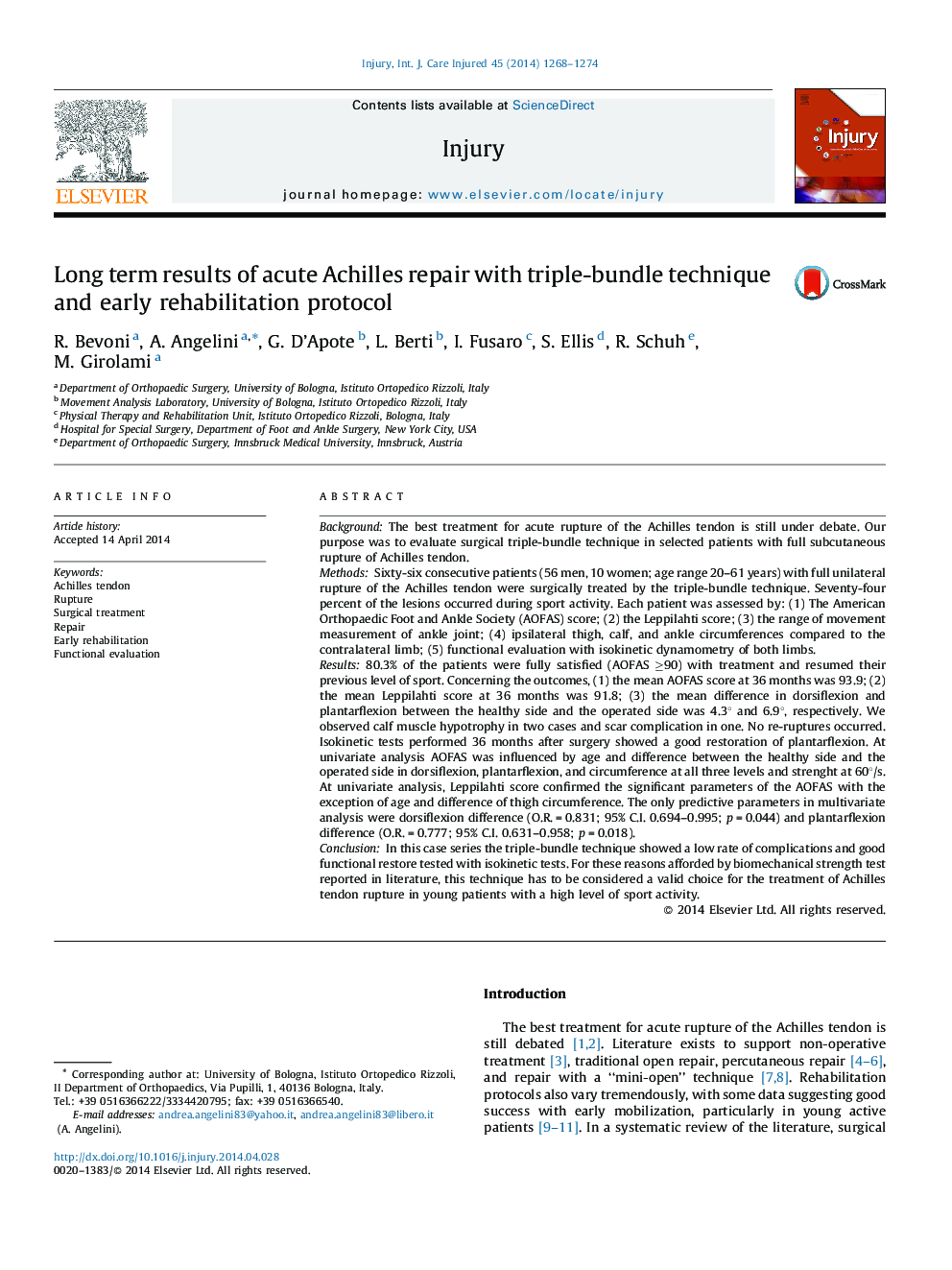| Article ID | Journal | Published Year | Pages | File Type |
|---|---|---|---|---|
| 3239553 | Injury | 2014 | 7 Pages |
BackgroundThe best treatment for acute rupture of the Achilles tendon is still under debate. Our purpose was to evaluate surgical triple-bundle technique in selected patients with full subcutaneous rupture of Achilles tendon.MethodsSixty-six consecutive patients (56 men, 10 women; age range 20–61 years) with full unilateral rupture of the Achilles tendon were surgically treated by the triple-bundle technique. Seventy-four percent of the lesions occurred during sport activity. Each patient was assessed by: (1) The American Orthopaedic Foot and Ankle Society (AOFAS) score; (2) the Leppilahti score; (3) the range of movement measurement of ankle joint; (4) ipsilateral thigh, calf, and ankle circumferences compared to the contralateral limb; (5) functional evaluation with isokinetic dynamometry of both limbs.Results80.3% of the patients were fully satisfied (AOFAS ≥90) with treatment and resumed their previous level of sport. Concerning the outcomes, (1) the mean AOFAS score at 36 months was 93.9; (2) the mean Leppilahti score at 36 months was 91.8; (3) the mean difference in dorsiflexion and plantarflexion between the healthy side and the operated side was 4.3° and 6.9°, respectively. We observed calf muscle hypotrophy in two cases and scar complication in one. No re-ruptures occurred. Isokinetic tests performed 36 months after surgery showed a good restoration of plantarflexion. At univariate analysis AOFAS was influenced by age and difference between the healthy side and the operated side in dorsiflexion, plantarflexion, and circumference at all three levels and strenght at 60°/s. At univariate analysis, Leppilahti score confirmed the significant parameters of the AOFAS with the exception of age and difference of thigh circumference. The only predictive parameters in multivariate analysis were dorsiflexion difference (O.R. = 0.831; 95% C.I. 0.694–0.995; p = 0.044) and plantarflexion difference (O.R. = 0.777; 95% C.I. 0.631–0.958; p = 0.018).ConclusionIn this case series the triple-bundle technique showed a low rate of complications and good functional restore tested with isokinetic tests. For these reasons afforded by biomechanical strength test reported in literature, this technique has to be considered a valid choice for the treatment of Achilles tendon rupture in young patients with a high level of sport activity.
